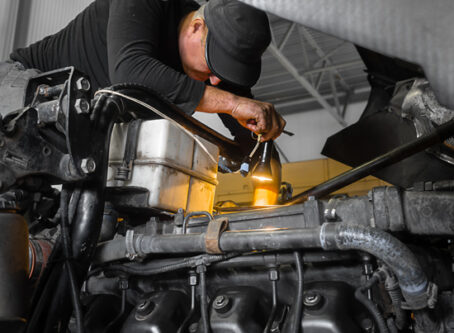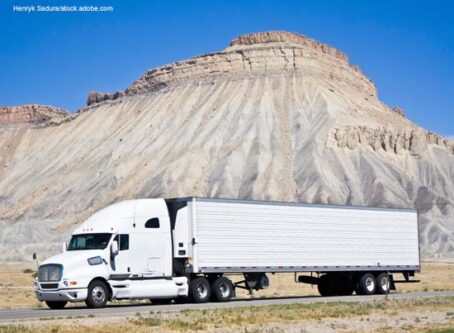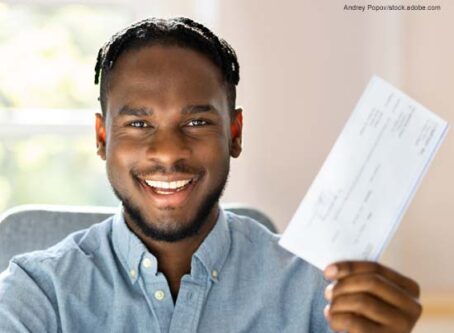Oregon task force submits automated vehicle policy recommendation to legislature
On Monday, Sept. 10, Oregon’s Task Force on Autonomous Vehicles submitted its final report to the legislature, paving the way for potential new rules and regulations guiding self-driving cars and trucks. In July, the Owner-Operator Independent Drivers Association submitted comments to the group regarding issues specific to the trucking industry.
Established by House Bill 4063, the Task Force on Autonomous Vehicles in Oregon was directed to develop recommendations for legislation regarding the deployment of autonomous vehicles on highways. The bill mandated a report be submitted to the Legislative Assembly no later than Sept. 15. That report and the recommendations it contains are in.
Topics addressed in the report include licensing and registration; law enforcement and crash reporting; cybersecurity; and insurance and liability. The bulk of the recommendation apply mostly to the testing of autonomous vehicles.
Licensing and registration
Any human who performs any aspect of the driving task should possess valid driving privileges, regardless whether or not the vehicle takes control for the majority of the time, the task force recommended. AV users who perform no aspect of the driving task are passengers and do not require a license.
Vehicles must have certification that they comply with Federal Motor Vehicle Safety Standards or Federal Motor Carrier Safety Regulations.
Specific to the trucking industry, manufacturers testing automated commercial motor vehicles do not need to display an identifying decal but will need to provide ODOT and state police with images of the testing vehicles, information about routes, and notification of testing dates and times, similar to ODOT’s current voluntary notification process for automated vehicle testing.
However, passenger vehicles being tested must display a small decal on the rear window of the testing vehicle to indicate to law enforcement that it is an automated testing vehicle. Consideration should be given to ensure that the decals are discreet and identifiable only by law enforcement.
Drivers wanting to test AVs must submit a summary of their training, pass a background check and have a clean driving record.
Insurance and liability
The task force recommends that when the automated tech for commercial vehicles becomes more developed, insurance minimums should be set, specifically for commercial vehicles equipped with automated tech Levels 3 and higher.
For AV testing, $5 million umbrella insurance per event should be required.
Law enforcement and crash reporting
Before acquiring a testing permit, manufacturers are recommended to submit a law enforcement/first responder interaction plan, which should include the following:
- How to communicate with a remote operator.
- Where in the vehicle to obtain owner information, vehicle registration, and proof of insurance.
- How to safely remove the vehicle from the roadway.
- How to recognize whether the vehicle is in autonomous mode.
- If possible, how to safely disengage autonomous mode.
- How to detect and ensure that autonomous mode has been deactivated.
- When applicable, how to safely interact with hybrid and electric vehicles.
- A description of the operational design domain of the vehicle.
The task force acknowledged that current Oregon law is sufficient to cover most possible law enforcement interactions. With that said, the group did state that as the technology develops, laws may need to adapt in the future.
Cybersecurity
The manufacturer must certify that the autonomous vehicle meets appropriate and applicable current industry standards to help defend against, detect and respond to cyber-attacks, unauthorized intrusions or false vehicle control commands.
Unanswered questions
Many issues were left untouched by the task force. However, House Bill 4063 allows the task force to submit a second report one year later, in September 2019.
One issue the task force wants to further explore is liability. More specifically, sorting out who is assigned liability versus who is required to maintain coverage. In submitted comments, OOIDA asked similar questions.
OOIDA also addressed insurance minimums. Although the task force did not directly address the issue, it did mention in the report that continuing work for the next report should include establishing minimum insurance requirements specifically for commercial autonomous vehicles.
According to the bill, only licensing/registration, cybersecurity, insurance/liability and law enforcement/accident reporting needed to be addressed in this first report. The second report, due next September, will focus on land use, road/infrastructure design, public transit, workforce changes, and state responsibilities relating to cybersecurity and privacy, all topics OOIDA addressed in its comments.
From here, the task force’s first report will go to the appropriate interim committee of the Legislative Assembly. What lawmakers do with the information is up in the air.









